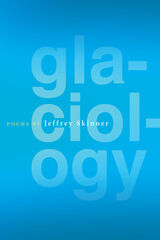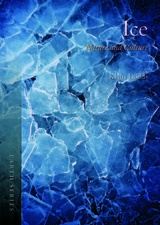
At the center of the book, the eighteen-part title poem “Glaciology” takes readers to the core of misunderstandings as it juxtaposes the work of a glaciologist with fractured language, misread cues, and a literalness that defies conventional explanation. The lives of the glaciers are reported with a careful, scientific language that keeps readers emotionally at bay from the effects of their demise, and the speaker comments, “I consider language / mistreated these days, asked to explain itself / to justify at the same time it bears / meaning, to own up / to creation at the moment of use / only, and only that meaning.”

This book tells the exciting story of the ice ages—what they were like, why they occurred, and when the next one is due. The solution to the ice age mystery originated when the National Science Foundation organized the CLIMAP project to study changes in the earth’s climate over the past 700,000 years. One of the goals was to produce a map of the earth during the last ice age. Scientists examined cores of sediment from the Indian Ocean bed and deciphered a continuous history for the past 500,000 years. Their work ultimately confirmed the theory that the earth’s irregular orbital motions account for the bizarre climatic changes which bring on ice ages.
This is a tale of scientific discovery and the colorful people who participated: Louis Agassiz, the young Swiss naturalist whose geological studies first convinced scientists that the earth has recently passed through an ice age; the Reverend William Buckland, an eccentric but respected Oxford professor who fought so hard against the ice-age theory before accepting it; James Croll, a Scots mechanic who educated himself as a scientist and first formulated the astronomic theory of ice ages; Milutin Milankovitch, the Serbian mathematician who gave the astronomic theory its firm quantitative foundation; and the many other astronomers, geochemists, geologists, paleontologists, and geophysicists who have been engaged for nearly a century and a half in the pressing search for a solution to the ice-age mystery.

As Dodds reveals, ice has played a prominent role in shaping both the earth’s living communities and its geology. Throughout history, humans have had fun with it, battled over it, struggled with it, and made money from it—and every time we open our refrigerator doors, we’re reminded how ice has transformed our relationship with food. Our connection to ice has been captured in art, literature, movies, and television, as well as made manifest in sport and leisure. In our landscapes and seascapes, too, we find myriad reminders of ice’s chilly power, clues as to how our lakes, mountains, and coastlines have been indelibly shaped by the advance and retreat of ice and snow. Beautifully illustrated throughout, Ice is an informative, thought-provoking guide to a substance both cold and compelling.
READERS
Browse our collection.
PUBLISHERS
See BiblioVault's publisher services.
STUDENT SERVICES
Files for college accessibility offices.
UChicago Accessibility Resources
home | accessibility | search | about | contact us
BiblioVault ® 2001 - 2024
The University of Chicago Press









